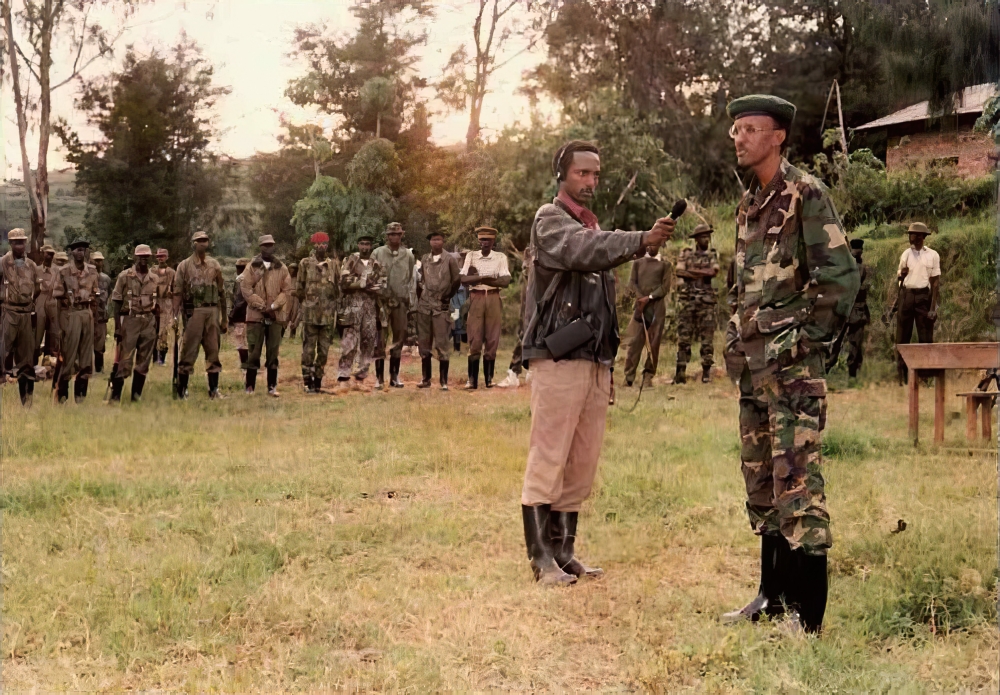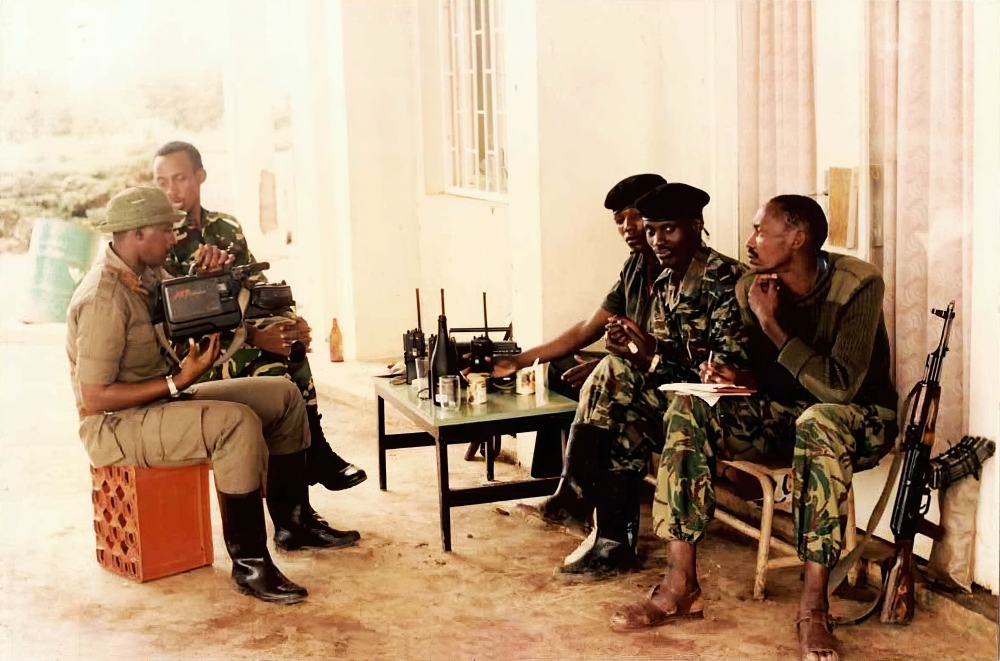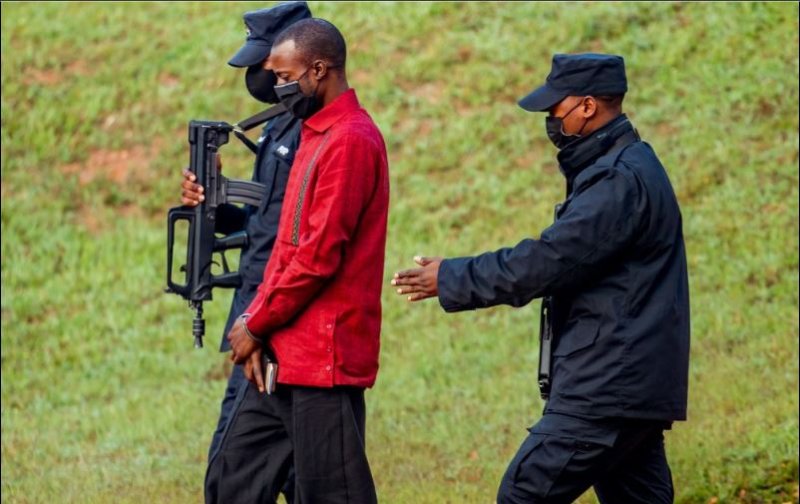In the wake of Rwanda’s liberation struggle, there emerged Radio Muhabura that served as a pivotal force, breathing life into the ambitions of the Rwanda Patriotic Front/Army (RPF/A).
A liberation movement’s triumph hinges on rallying the masses around a shared purpose, one that is not only unmistakably defined, but also embraced by the populace at large.
Radio Muhabura, a beacon of hope, served as the conduit through which the RPF/A disseminated and fortified its philosophy, organisational structure, and noble cause to the people of Rwanda.
As the RPF/A embarked on its mission to free Rwanda, the birth of Radio Muhabura coincided harmoniously with this noble pursuit. The concept of Radio Muhabura was a brainchild of the Chairman of the High Command, Paul Kagame who acknowledged the extraordinary power and influence of the radio medium, and it’s from him that the decision to establish a radio station was born.
Harnessing the vast reach and profound impact of this medium, the RPF/A aimed to amplify its resounding message, actively engage the masses, and secure their unwavering support for the arduous liberation struggle.
Retired Lieutenant Colonel Ndore Rurinda, a distinguished member of the RPF/A and intimately involved in the commencement of Radio Muhabura, embarks on a nostalgic voyage down the memory lane, recounting the humble origins of this radio station and its subsequent growth.
His insightful recollections unveil the meticulous structuring of the radio’s departments, underscoring the paramount importance placed on professionalism and efficiency. This thorough organisation within the radio station ensured that it could effectively fulfil its intended purpose, leaving an indelible mark on the course of history.
In an exclusive interview with The New Times, Rurinda delves into the intricate details of how Radio Muhabura was squarely set up and operated. Through his vivid reminiscences, a tapestry of the radio station’s inner workings begins to unravel, offering a glimpse into the unwavering dedication and boundless passion that animated those involved.
Among the cherished memories and experiences of the staff at Radio Muhabura, the newsroom held a place of unique significance. It served as the pulsating heart, where news was gathered, curated, and disseminated—an indispensable force that shaped public perception and galvanised support for the liberation movement.
Rurinda’s recollections provide invaluable insights into the challenges surmounted, the camaraderie forged among the team, and the unwavering commitment to journalistic integrity upheld within the newsroom’s hallowed walls.

“RPF was, at its core, a political-military organisation, where the military served as an instrument to achieve political objectives,” reflects Rurinda. In this realm, the RPF placed paramount importance on political guidance, mobilisation, and captivating the masses with their noble cause.
Ultimately, Radio Muhabura became a potent instrument, an indispensable tool needed to realise their lofty aspirations.
By the mid-1991, as the RPA captured significant territories, the foundations of Muhabura were laid. The inaugural station and its inaugural broadcast were intertwined with the majestic Virunga mountains, lending the radio station its distinctive name—Muhabura.
Although RPF/A was on the battlefield for the liberation of Rwanda, according to Rurinda, the radio was a manifestation of political leadership concept and by nature, the radio had both military and civilian staff.
Why not use foreign media
The RPF being a mass-based and pro-people movement, the belief was to win as many hearts as possible and that required a sustained strategy to unceasingly communicate to those that RPF looked up to for support.
Rurinda gives a hypothetical example to show why the radio was much needed. “Would you fight a liberation struggle using mercenaries?” he questions and proceeds, saying, “No, liberation struggles are fought by those that are familiar with a cause. In very simple terms, I would call Radio Muhabura as one among the many very crucial weapons of liberation we had, which was to fight and subdue the enemy using both military and political means.”
Before the inception of Radio Muhabura, RPF already had a media and communications department which published material and communicated through diplomatic channels. Radio Muhabura came into existence as an idea from the Chairman of the High Command, Paul Kagame, and serves as an extension of the RPF communications department.
Radio equipment
When the idea of setting up a radio came up, several Rwandans offered their contributions, including a senior engineer in an international tech company based in Canada.
The setup of the radio was simple as it required having a shortwave frequency which, according to Rurinda, mainly based on taking advantage of a higher altitude which helped the radio to transmit far.
“It was always intended that in order to have a wider reach, the radio had to occupy a higher ground, that’s how Muhabura Mountain came in handy in mid-1991 when the first broadcast was transmitted.
“When we managed to secure a frequency, we held on to it so that the audience knew how easy to listen in and every time we moved the radio, we maintained the frequency,” he says.
The then government did not jam Radio Muhabura simply because they lacked the capacity, but they had the will to silence it, which is why the radio was always heavily guarded as a powerful weapon.
“The radio could shoot way farther than the guns could. That’s why it is considered such an important weapon. It was always located in places where the enemy could not reach it easily and in close range to the RPA high command. Those two establishments were always under tight guard since they were high target areas for the enemy,” adds Rurinda.
Although Radio Muhabura wasn’t jammed, Habyarimana’s regime sent emissaries into the RPA controlled territories several times to locate the radio. The intent was, in the event they knew where the radio was located, they would militarily annihilate it. However, all emissaries would be made known and reveal their mission, which made the protection of the radio even more important.
The RPA took out the former Byumba around July 1992, currently Gicumbi District, and the radio was moved to Bungwe across Mulindi.
According to Rurinda: “Moving the radio was very simple, it was more like moving three or four boxes on the back to the next location. Its strength was not in the sophisticated equipment but rather in the message and altitude so that we didn’t meet obstacles in transmission. We moved the radio about four times. First from the volcanic region to Bungwe, then we moved to Kaniga right behind Mulindi and to the makeshift stopover we made around Rwamagana District as we approached Kigali.”
Radio Muhabura departments
“Muhabura was a complete success story. Through its existence it was a manifestation of the RPF. It has several departments, there was the editorial department which had both military and civilian personnel, I happened to be part of the editorial team on the military side along with several other officers who are still in service and others retired,” says Rurinda.
The editorial team also had sections, there was an editorial board that had senior editors working in Kinyarwanda, English, French and Swahili.
There was also the news team that had staff that would collect and report news. The newsroom also had a drama team which would cast and broadcast to entertain listeners. Everything done at the radio was recorded on compact cassette, cut manually in the editing process.

“The editorial started small, at the beginning there were only four people and I was among the four pioneers,” Rurinda says.
In detailing other departments, Rurinda points out that there was also a technical department as well as a security department. Each department had a manager.
Part of the responsibilities of the technical team besides the setting up of equipment was to position the generator. Muhabura was running on a generator which had to be underground to not interfere with the broadcast, and so its smoke would not attract the enemy.
Beside the generator, the newsroom and the studio were also set up in bunkers for security purposes. It was only the antennas that were raised above the group.
As the radio engineers developed later, they devised methods of using cable antennas instead of heavy metallic antennas that would be placed high up and far away for the purpose of transmitting signals over a greater distance.
“As days went by we kept receiving more equipment from our supporters who were listening and were being listened to by people as far as Europe. By mid-1993, Muhabura was a fully-fledged strong radio,” he says.
Radio Muhabura as a multi-media
The radio eventually grew and developed a photo and video desk. It is here that some photos of liberation were captured. It was now totally impossible for Habyarimana’s regime to counter Radio Muhabura.
However, the more the radio grew, the more responsibilities came along. Journalists had to now cover every event and every part of the struggle including continuously connecting front liner fighters and their families.
“Any feedback was always exciting; people knew our pseudo names but they didn’t know us. Like my pseudo name was Fidele Rulindintwari. Eventually we even recruited from the other side and got professional news anchors shifting from Radio Rwanda to Radio Muhabura,” Rurinda says.
Among those that shifted was Louise Kayibanda who was vocal in broadcasting anti-RPF content and suddenly switched to the RPF side.
This attracted much attention to the radio and by 1993 Muhabura was able to even have live interviews on air.
The radio grew to an extent of doing rebuttals against western media and local media.
“We had developed capabilities including monitoring all media outlets and telephone conversations to an extent that we could know where the next attack would be and alert citizens there. I don’t know how technicians did it but they always had information,” Rurinda says.
Reporting news with an AK47
“We most times did this in support of military operations. An example, in the offensive launched in 1993 in protest against the killings that were going on amidst peace talks. That offensive covered a lot of ground and we had to move with the front liners to cover what was going on. That is one of the times we had to be involved directly,” Rurinda recalls.
Key memories
According to Rurinda, the successes on the ground were very exciting to report about.
One of the most exciting moments was covering the flagging off of the 600 RPA soldiers who accompanied the RPF politicians to Kigali who were to be part of the broad-based transition government as decided by the Arusha agreement.
The flagging off happened on the same day as the first RPF congress to be held on Rwandan soil, and according to Rurinda, despite being an extremely busy day for Radio Muhabura reporters, it was equally exciting to witness how events that would eventually define the future of Rwanda were unfolding.
“It was such a euphoria. The other exciting part was when the RPF volleyball team travelled to Butare to play against the University of Rwanda and we had to travel along with the team to cover the game,” Rurinda narrates.
RPF won elections in 1993
When RPA launched an offensive in protest of killing civilians, they captured a vast area. Eventually, that area had to come under a certain leadership when RPA relinquished them and handed them to the UN Mission in Rwanda. For that to happen, the area was buffered and branded demilitarised. Now the RPF side and the Habyarimana regime side had to compete in the election in the demilitarised zone.
“The UN Mission in Rwanda monitored the elections and surprisingly RPF had a landslide victory in the area, and it was exciting for Radio Muhabura to cover because people clearly showed their stand,” says Rurinda.
RPF’s victory was rooted from the social services they had given people in the area including medical care, schools and others.
Muhabura fixers
In journalism, a fixer is a local person who helps a journalist working in a foreign country, often arranging interviews, translating documents, interpreting interviews, offering in-country expertise, and serving as a go-between or cultural ambassador to a community.
Radio Muhabura had grown to have fixers. Rurinda had become a fixer, handling foreign media. At a certain point, there were over 150 foreign journalists on the side of RPF and they all had to be fixed by reporters from Radio Muhabura.
“The Habyarimana regime had given a total blackout on the media on reporting about what was going on in Rwanda, the only access was through RPF controlled area and it was an honour for Radio Muhabura to show journalists exactly what was going on considering that RPF had put out a communique detailing how to access Rwanda through the RPF territory,” says Rurinda.
Muhabura’s last broadcast
Radio Muhabura turned into the national radio since Radio Rwanda had been looted and taken to the then Zaire. Muhabura technicians worked tirelessly to marry the RPA radio to the national radio using the existing antenna of RTLM that had been abandoned, connected them into the fixed structures, and by July 04, 1994, Radio Muhabura had already been transformed into Radio Rwanda and the same journalists on Radio Muhabura were now on Radio Rwanda.
The original Radio Rwanda system was later recovered from the Zaire camps and returned back to Rwanda.
SOURCE: TNT





